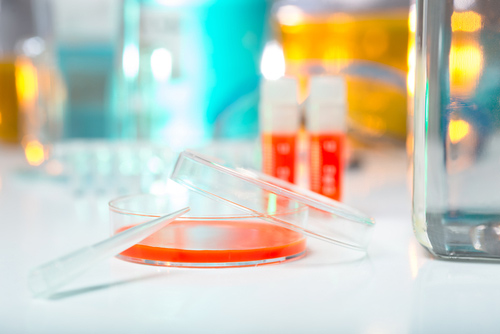Chemical transfection, which relies on the formation of a condensed complex of positively charged liposomal or non-liposomal reagents and negatively charged nucleic acids, is the most common method for delivering foreign genetic material into cultured cells. Complexes are attracted to the negatively charged cell membrane and potentially pass through it via mechanisms involving endocytosis and phagocytosis.1
“The negative to positive ratio impacts the complex size and the overall positive charge. The best ratio is cell type dependent,” says Sandy Tseng, PhD, technical support scientist, Mirus Bio.
Chemical methods offer a slew of advantages: relatively low cytotoxicity, ease of use, cost effectiveness, low likelihood for unintended mutagenesis, no viral vector involvement, no discrimination of type of nucleic acid, and researcher safety. But the correct protocol needs to be identified and optimized to maximize transfection efficiency and product yield for the cell type and molecule.1
“Sometimes, reagents may not work very well, especially for primary cells that do not divide as rapidly as immortalized cell lines. This may be because most of the uptake of transfection complexes happens during cell division when the nuclear membrane breaks down naturally,” says Tseng.
Measuring transfection efficiency
Transfection efficiency equates to the percentage of cells transfected in the sample. “Typically, the downstream functional effect is measured,” says Tseng.
Frequently employed, easily trackable fluorescent-based reporter assays include green fluorescent protein (GFP), luciferase, β-galactosidase (β-gal), and secreted embryonic alkaline phosphatase (SEAP). In other cases, Western blots or immunostaining can quantify protein expression and quantitative PCRs can be used to track transfected nucleic acid levels.
An overlooked method to calculate transfection efficiency is the use of fluorescently-labeled nucleic acids, which enables tracking of intracellular delivery.2 “You need uptake before function,” adds Tseng.
Achieving optimal and consistent transfection efficiency
Transfection efficiency depends on a number of factors.
“For most adherent cells it is standard to split them the day prior so they will be ~ 80% confluent at the time of transfection. Different cells might double differently or behave differently at this confluency. For transfection complexes, various reagents and nucleic acid ratios should be tested,” says Tseng. “Plus some reagents work better with larger nucleic acids than smaller ones, such as siRNA.”
“Trivial protocol points can have a major impact. Be as consistent as possible. You want the cells to be a similar passage number, and the media, growth container, FBS batch, and the complex conditions should also be the same between replicate transfection experiments,” says Tseng. “Manufacturers provide assistance and literature searches using ‘your cell type of interest’ and ‘transfection’ as key words will often yield helpful protocol pointers for your cell type of interest.”
A recent study evaluated mixing with a pipette versus a dropwise addition in the preparation of polyethylenimine (PEI) and plasmid DNA polyplexes. These subtle changes markedly influenced the physicochemical properties of the transfection complex and resulting performance.3
Optimizing protocols
An operational flow termed “Design of Transfections” (DoT) based on Design of Experiment (DoE) methods, was used for specific transfection modeling and identification of optimal conditions. The workflow was applied to optimize a PEI protocol for extremely difficult-to-transfect neural progenitors. Key influencing factors, including concentration and type of PEI, DNA concentration, and cell density, were simultaneously varied and a simple, efficient, and economical protocol established.1
In a biomanufacturing study a stirred bioreactor method was studied to grow cell therapy products. Non-liposomal cationic and cationic lipid reagents were evaluated along with rate-limiting culture factors. The efficiency achieved with non-liposomal cationic reagents was comparable to previous reports of viral transduction of T cells in culture suspension and more than ten times higher than liposomal reagent mediated transfections reported elsewhere.4
Alternatives to chemical transfection
“Know when to give up with chemical reagents, especially with difficult-to-transfect cells. There are different biological or physical methods that you can use,” advises Tseng.
Biological methods are mediated by viruses, virus-like particles, or extracellular vesicles. Virus-mediated transfection (transduction) is highly effective and easy-to-use although immunogenicity, cytotoxicity, safety considerations, and limited space for foreign nucleic acids pose drawbacks.5
Physical methods can require expensive instruments, specialized expertise, or cause physical cellular damage. However, some methods are quick-and-easy, and can transfect many cells in a short time, once optimum conditions are determined.5,6
When choosing among the methods available, practical factors and the overall goal of the application should be considered. Speed and reproducibility may factor in the decision to assess or try a new protocol, and access to various technologies may be limited or not within budget. Some applications may seek to achieve the highest transfection efficiency despite cell health, while others may want to preserve cell health to maintain a physiologically relevant environment.
References
- Mancinelli S,Turcato A, Kisslinger A, Bongiovanni A, Zazzu V, Lanati A, Liguori GL. Design of transfections: Implementation of design of experiments for cell transfection fine tuning. Biotechnol Bioeng. 2021;118:4488–4502. DOI: 10.1002/bit.27918
- Homann S, Hofmann C, Gorin AM, Nguyen HCX, Huynh D, Hamid P, Maithel N, Yacoubian V, Mu W, Kossyvakis A, Sen Roy S, Yang OO, Kelesidis T. A novel rapid and reproducible flow cytometric method for optimization of transfection efficiency in cells. PLoS One. 2017 Sep 1;12(9):e0182941. doi: 10.1371/journal.pone.0182941. eCollection 2017
- Pezzoli D., Giupponi E., Mantovani D. Candiani G. Size matters for in vitro gene delivery: investigating the relationships among complexation protocol, transfection medium, size and sedimentation. Sci Rep. 2017 Mar 8;7:44134. doi: 10.1038/srep44134
- Hsu, CYM, Walsh T, Borys BS, Kallos MS, Rancourt DE. An Integrated Approach toward the Biomanufacturing of Engineered Cell Therapy Products in a Stirred-Suspension Bioreactor. Molecular Therapy. Methods & Clinical Development. Volume 9, 15 June 2018, Pages 376-389. doi.org/10.1016/j.omtm.2018.04.007.
- Kim TK and James H. Eberwine JH. Mammalian cell transfection: the present and the future. Anal Bioanal Chem (2010) 397:3173–3178 DOI 10.1007/s00216-010-3821-6
- Chong ZX, Yeap SK, Ho WY. Transfection types, methods and strategies: a technical review. PeerJ. 2021 Apr 21;9:e11165. doi: 10.7717/peerj.11165.



